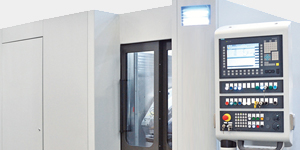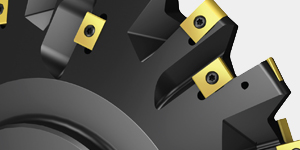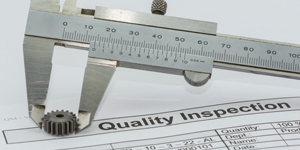Deburring removes unwanted metal pieces from manufactured parts. This process creates smooth, safe surfaces on metal components. Every metal part needs proper finishing to work correctly and last longer.
Key Takeaways
Deburring removes unwanted metal pieces called burrs that form during manufacturing processes such as cutting, drilling, and machining.
Different deburring methods including manual, automated, and specialized techniques work best for specific materials and applications.
Professional deburring improves part safety, performance, and appearance while maintaining precision tolerances for critical applications.

What Is Deburring? Definition and Meaning
Deburring is the process of removing small metal pieces called burrs from machined parts. These unwanted pieces stick out from edges and surfaces after cutting, drilling, or shaping metal. The word “deburr” means to make smooth by taking away these rough spots.
Metal manufacturing creates burrs during normal operations. When machines cut through metal, tiny pieces can curl up or break away but stay attached to the main part. These pieces make parts look rough and can cause problems during assembly.
Professional deburring makes parts safer to handle and improves both function and appearance. Sharp burrs can cut workers’ hands and damage other components during assembly. Parts with clean edges perform better in high-pressure systems and moving assemblies.
What are the components of a gearbox shows how precision parts need smooth surfaces to work together perfectly in high-performance applications.
Now that we understand what deburring accomplishes, let’s explore how these problematic burrs actually form during manufacturing.
Understanding Metal Burrs: What Causes Them
Burrs form when metal gets displaced during manufacturing but doesn’t completely separate from the main part. This happens because cutting tools push material aside rather than making perfectly clean cuts every time.
Manufacturing processes create burrs through different mechanisms. Machining operations such as milling and turning create curled metal pieces as cutting tools push material to one side. Drilling operations often leave burrs around hole openings where the drill bit exits the material.
Metal cutting processes including laser, plasma, and waterjet cutting also produce burrs. Heat from these processes can melt and reform metal along cut edges. Even precise cutting methods leave some material that requires removal.
Stamping and forming operations push metal into new shapes under high pressure. This force can cause material to flow beyond intended boundaries, creating excess material that becomes burrs.
Three main types of burrs occur during manufacturing:
- Rollover burrs: Most common type, appearing as small curled pieces along edges.
- Poisson burrs: Form when too much material collects at part ends.
- Breakout burrs: Have a torn appearance where material separates unevenly.
- Understanding these formation patterns helps manufacturers select appropriate removal methods for each specific application.
With a clear picture of how and why burrs form, we can now examine the various methods available to remove them effectively.
How to Deburr Metal: Process and Methods
Metal deburring uses several methods depending on part size, material type, and quality requirements. Each approach delivers specific benefits for different manufacturing situations. (Figure 1)
Manual Deburring Process
Hand deburring uses simple tools to remove burrs from individual parts. Workers use files, scrapers, and abrasive stones to smooth rough edges. This method works well for small production runs and complex shapes that machines cannot reach.
Manual methods give operators complete control over the process. Skilled workers can feel when edges are properly smooth and adjust pressure as needed. However, hand deburring takes more time and creates inconsistent results between different operators.
For higher production volumes and consistent quality, automated systems offer significant advantages.
Automated Metal Deburring
Mechanical deburring systems use machines to remove burrs quickly and consistently. These systems process many parts in the same time it takes to finish one part by hand.
Abrasive belt grinding removes burrs using moving sandpaper-like belts. Parts pass through the machine while belts sand away unwanted material. This method works well for flat surfaces and straight edges with repeatable accuracy.
Rotary brush deburring uses spinning brushes with abrasive materials. The brushes conform to part shapes and remove burrs from curved surfaces. This technique is gentler than belt grinding and works well on delicate components.
CNC automated deburring programs machines to follow specific paths around each part. Computer control makes the process repeatable and precise to AGMA Class 6 standards. These systems handle complex geometries that other methods cannot process effectively.
When standard mechanical methods cannot reach certain areas or handle specific materials, specialized techniques provide solutions.

Specialized Deburring Techniques
Thermal deburring uses controlled gas combustion in sealed chambers to remove burrs. This method reaches inside holes and complex internal passages where mechanical tools cannot access. The process heats burrs until they burn away while leaving the main part unchanged.
Electrochemical deburring dissolves burrs using electrical current and specialized electrolytes. This technique removes material very precisely without affecting nearby surfaces. The process works well for hardened materials and maintains tolerances within ±0.0002 inches.
Gearbox manufacturing requires precise deburring techniques to meet performance standards across all component interfaces.
Having covered the main deburring methods, let’s examine how these techniques apply to different industries and materials.
Metal Deburring Applications and Materials
Different industries require specific deburring approaches based on their performance needs and safety requirements. Understanding these applications helps manufacturers choose the right finishing methods.
Critical Deburring Applications
Precision metal parts in aerospace and medical devices need perfect surface finishes. Even tiny burrs can cause these components to fail during operation. Deburring removes all surface imperfections to meet strict quality standards.
High-pressure systems in oil and gas operations require smooth internal surfaces. Burrs can create leaks or restrict fluid flow through pipes and valves. Heavy-duty equipment in mining and construction uses large metal components that must withstand extreme forces.
Custom build solutions often require specialized deburring techniques for unique applications and challenging geometries.
Beyond industry applications, the type of metal being processed significantly influences which deburring approach works best.
Material-Specific Metal Deburring
Different metals need specific deburring approaches to achieve the best results without damaging the base material. (Figure 2)
Steel deburring uses aggressive methods because this material can handle high grinding forces. Carbon and alloy steels respond well to belt grinding and mechanical cutting without dimensional changes.
Aluminum deburring requires gentler approaches because this soft material can smear or distort. Brushing and light abrasion work better than aggressive grinding while maintaining surface integrity.
Stainless steel deburring maintains the material’s corrosion resistance properties. Special abrasives prevent contamination that could cause rust or staining without affecting the protective surface layer.
High-speed gearboxes use specialty alloys that need careful finishing to maintain performance characteristics under extreme operating conditions.
Understanding applications and materials leads us to the equipment and practices that make successful deburring possible.
Deburring Equipment and Best Practices
Modern deburring equipment combines speed with consistency to meet production demands. These systems integrate with manufacturing workflows to improve overall efficiency.
Automated deburring machines use programmable controls to repeat the same process on every part. Computer-controlled systems maintain consistent pressure and speed throughout operations. This automation reduces operator fatigue and improves quality control.
Robotic deburring systems handle complex parts that require multiple finishing operations. Robots can rotate parts to reach all surfaces and change tools as needed. These systems work continuously without breaks while maintaining identical quality standards.
Process development starts with understanding part requirements and production volumes. High-volume operations benefit from dedicated deburring lines, while custom parts might need flexible systems. Matching equipment capabilities to production needs improves efficiency.
Quality control measures verify that deburring meets specifications. Operators use precision gauges and coordinate measuring machines to check surface finish quality. Regular monitoring catches problems early and maintains consistent results.
Common deburring challenges include complex geometries that are hard to reach. Internal passages and intersecting holes need special techniques or tool access. Planning the deburring process during part design helps avoid these problems.
Maintaining precision during deburr operations requires careful control of cutting forces. Too much pressure can change part dimensions or create new burrs. Operators must balance material removal with dimensional accuracy.
State-of-the-art testing facility capabilities help manufacturers develop and verify deburring processes for critical applications.
Deburring FAQs
How much does deburring cost per part?
Deburring costs range from 50 cents to $15 per part depending on size, complexity, and method used. Automated systems reduce costs for high-volume production while manual deburring works better for small quantities.
Can deburring damage my parts or change dimensions?
Proper deburring removes only burrs without affecting part dimensions when done correctly. Professional operators control cutting forces and use appropriate methods to maintain precision tolerances.
What’s the difference between deburring and polishing?
Deburring removes unwanted burrs and sharp edges to make parts functional and safe. Polishing smooths entire surfaces for appearance and creates mirror-like finishes for aesthetic purposes.
Which deburring method works best for my application?
Method selection depends on material type, part geometry, and quality requirements. Consult with deburring experts to evaluate your specific needs and recommend the most effective approach.
Get Professional Deburring Solutions
Deburring transforms rough machined parts into smooth, functional components. This process improves safety, performance, and appearance across all manufacturing industries. Proper deburring techniques prevent assembly problems and extend product life.
Choosing the right deburring method depends on material type, part geometry, and quality requirements. Manual techniques work for small quantities while automated systems handle high-volume production. Specialized methods solve challenging applications that standard approaches cannot address.
Professional deburring services help manufacturers achieve consistent results without major equipment investments. Expert knowledge and specialized equipment often produce better outcomes than in-house operations.
Cotta’s precision engineering team can develop custom deburring solutions that meet specific requirements and quality standards. At Cotta, the company’s ISO 9001:2015 certified processes maintain precision tolerances within ±0.001 inches while removing all surface imperfections. This zero-defect approach creates components that meet the most demanding performance standards.



























